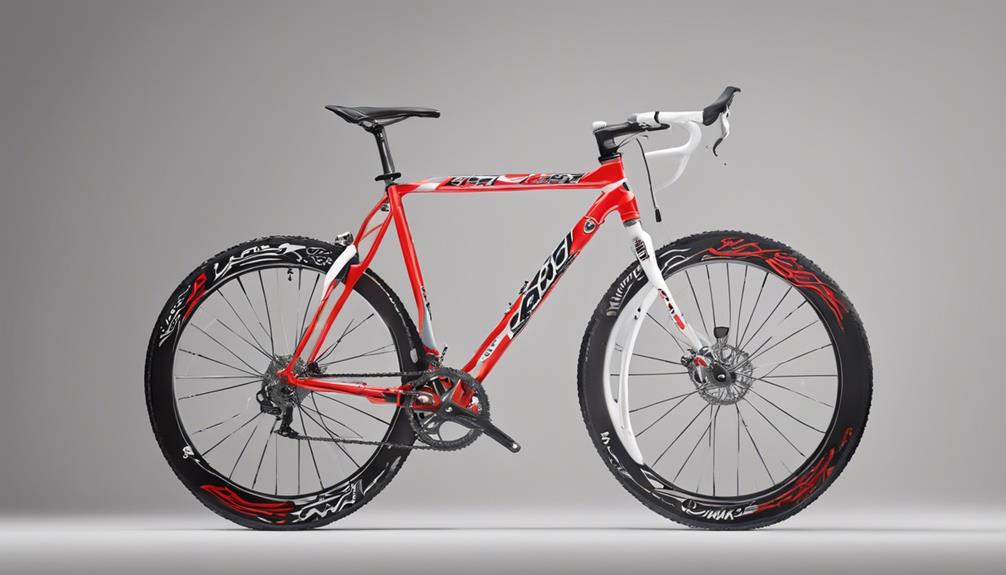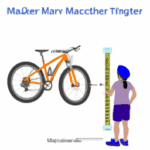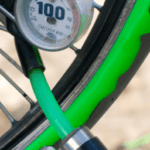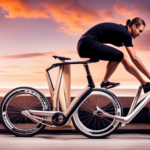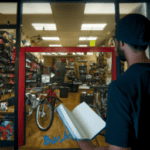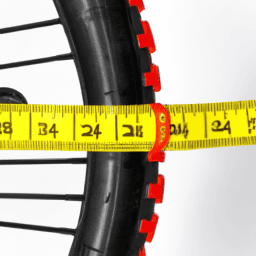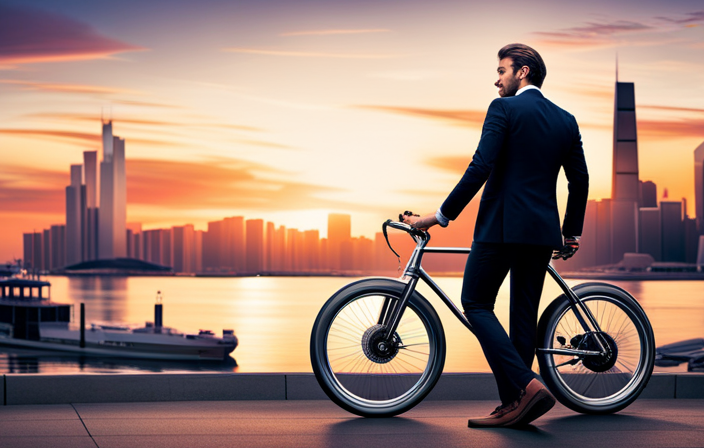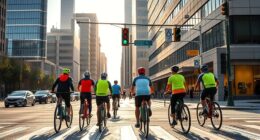As someone who is passionate about cycling, I frequently encounter the same inquiry from those new to the sport: What is the ideal amount to invest in a bike? The response is not straightforward or limited to a specific figure, because it relies on multiple aspects including the type of riding you prefer, your objectives, and your available financial resources.
In this article, I will guide you through the process of determining the ideal budget for your bicycle purchase.
First and foremost, it is essential to consider your riding style and goals. Are you a casual rider who enjoys leisurely rides on the weekends, or are you a serious athlete who participates in competitive races? Your riding style and goals will determine the type of bicycle you need, which in turn will affect your budget.
For instance, a road bike designed for racing will cost significantly more than a hybrid bike designed for commuting. By identifying your riding style and goals, you can narrow down your options and make an informed decision on how much to spend on your bicycle.
Key Takeaways
- The ideal budget for a bicycle purchase depends on riding style, goals, and budget.
- Identifying riding style and goals can narrow down options for budget.
- Prioritizing quality over quantity ensures a reliable and sturdy bike for long-term investment.
- Additional costs such as maintenance, accessories, and upgrades should be factored in for long-term value and optimal performance.
Determine Your Riding Style and Goals
Figuring out how and where you’ll be riding will help you determine how much bike you need, so let’s get to it!
The first thing to consider is whether you’re looking for endurance or speed. If you plan on taking long rides and tackling hills, you’ll want a bike with a comfortable upright position and a wide range of gears. On the other hand, if you’re looking to go fast and compete in races, you’ll want a bike with a more aggressive, aerodynamic position and a lighter weight.
The second thing to consider is whether you’ll primarily be riding in the city or on trails. If you’re going to be commuting or running errands in the city, you’ll want a bike with sturdy tires and good brakes for navigating traffic. If you plan on hitting the trails, you’ll want a bike with wider tires and suspension to handle rough terrain. Keep in mind that some bikes are versatile enough to handle both city and trail riding, so consider your needs carefully before making a decision.
Now that you’ve determined your riding style and goals, it’s time to consider your budget and make sure you’re getting the most bang for your buck.
Consider Your Budget
When it comes to buying a bike, you’ll want to keep your budget in mind to ensure you find a great ride without breaking the bank. Here are a few things to consider when deciding on your budget:
-
Used vs. new: A used bike may be a cheaper option, but it may require more maintenance in the long run. A new bike will likely come with a warranty and require less upkeep, but it will be more expensive.
-
Brand name vs. generic: A brand name bike may be more expensive, but it often comes with a higher quality frame and components. A generic bike may be cheaper, but it may not last as long or perform as well.
-
Additional accessories: Don’t forget to factor in the cost of any additional accessories you may need, such as a helmet, lock, or lights.
-
Financing options: If you can’t afford to pay for the bike upfront, consider financing options. Just be sure to read the fine print and understand the interest rates and fees.
It’s important to find a bike that fits your budget, but you also want to make sure it meets your needs. Once you’ve determined your budget, you can move on to the next step: deciding between quality and quantity.
Quality vs. Quantity
If you want to enjoy long bike rides without worrying about wear and tear, prioritizing quality over quantity will ensure your bike is reliable and sturdy. It’s tempting to opt for a cheaper bike, but it’s important to consider the long-term investment. A high-quality bike from a reputable brand may seem pricier upfront, but it will save you money in the long run due to its durability and resale value.
Brand loyalty is a factor to consider when it comes to quality. Stick to brands with a good reputation for producing high-quality bikes. A well-known brand will have a better resale value than an unknown brand. In addition, investing in a good quality bike means you won’t have to replace it as frequently, saving you money in the long run. When you consider all these factors, it’s clear that investing in a high-quality bike is a wise decision.
Transitioning into the subsequent section, it’s important to note that while investing in a high-quality bike is crucial, it’s not the only cost to factor in. There are additional costs such as maintenance, accessories, and upgrades that should also be considered.
Factor in Additional Costs
Taking into account the various expenses beyond the initial purchase, such as maintenance and upgrades, is essential for ensuring the long-term value and optimal performance of your bike.
Maintenance expenses are a crucial factor to consider when calculating the total cost of owning a bicycle. Regular maintenance is necessary to keep your bike in good condition and prevent major repairs. You should budget for costs like tune-ups, chain replacements, and brake pad replacements. If you neglect these routine maintenance tasks, you could end up spending much more money in the long run.
In addition to maintenance expenses, you should also factor in the cost of necessary accessories. Depending on your riding style and needs, you may require accessories like a helmet, lights, lock, and cycling shoes. These costs can add up quickly, so it’s important to consider them when determining your budget for a new bike.
Taking these expenses into account will help you make a more informed decision about how much you should spend on a bicycle. Now, it’s time to test ride and compare options.
Test Ride and Compare Options
Now it’s time to hop on different bikes and compare them like a kid in a candy store, finding the perfect fit for your riding style and needs. When testing out bikes, it’s important to consider the balance between comfort and performance. A bike that is too comfortable may not be suitable for racing or long distance rides, while a high-performance bike may not be comfortable for everyday commuting or leisurely rides.
To help with your comparison, consider creating a table with three columns and four rows to track the differences between each bike. The first column can list the brand or type of bike, the second can list the specifications such as frame material, gear ratios, and wheel size, while the third column can list the pros and cons of each option. The fourth column can be used to score each bike based on your preferences for comfort and performance. Keep in mind that while brand name bikes may come with a higher price tag, custom-built bikes may offer a more tailored fit to your body and riding style. Ultimately, the choice between brand name or custom will depend on your budget and personal preferences.
Frequently Asked Questions
What is the best type of bicycle for commuting to work?
For commuting to work, a hybrid bike with a lightweight frame, comfortable seat, and durable tires is ideal. Consider bike accessories like a water bottle holder and bike lock, and storage solutions like a bike rack or indoor bike stand.
How often should I replace my bicycle tires?
Factors affecting tire wear include the type of terrain, weather conditions, and frequency of use. It is recommended to check tire pressure regularly and follow manufacturer’s recommendations. Replacement is necessary when the tread wears down or there are visible signs of damage.
What is the difference between a road bike and a mountain bike?
When choosing between a road bike and mountain bike, consider your needs. Road bikes are fast and efficient on smooth surfaces, while mountain bikes have suspension for off-roading. Suspension can make the ride smoother, but rigid frames are lighter and more efficient.
Are carbon fiber frames worth the extra cost?
When it comes to bike frames, carbon fiber is lighter and offers more stiffness, but is more expensive than aluminum. However, aluminum frames are more durable and cheaper. Consider your weight vs durability needs when deciding between the two.
How do I properly maintain my bicycle to ensure longevity?
To ensure the longevity of my bicycle, I follow proper cleaning techniques by removing dirt and grime with a soft brush and mild soap. I also use lubrication methods to keep the chain and other moving parts running smoothly.
Conclusion
After considering all the factors, I’ve concluded that purchasing a bicycle shouldn’t be taken lightly. It’s important to determine your riding style and goals, consider your budget, and factor in additional costs before making a decision.
As the adage goes, "buy cheap, buy twice,"it’s crucial to invest in quality over quantity. When deciding how much to spend on a bicycle, it’s essential to prioritize your needs and goals. Don’t break the bank on a high-end racing bike if you’re only using it for leisurely rides around the neighborhood. On the other hand, if you’re a serious cyclist with a competitive edge, investing in a higher-end bike may be worth it.
Remember that the cost of the bike is just the beginning. Additional expenses like accessories, maintenance, and repairs should also be considered. Taking the time to test ride and compare options will ensure you’re making an informed decision and getting a bike that fits your needs and budget.
So, whether you’re a casual rider or a seasoned pro, remember to prioritize quality over quantity and invest wisely in your bicycle.

